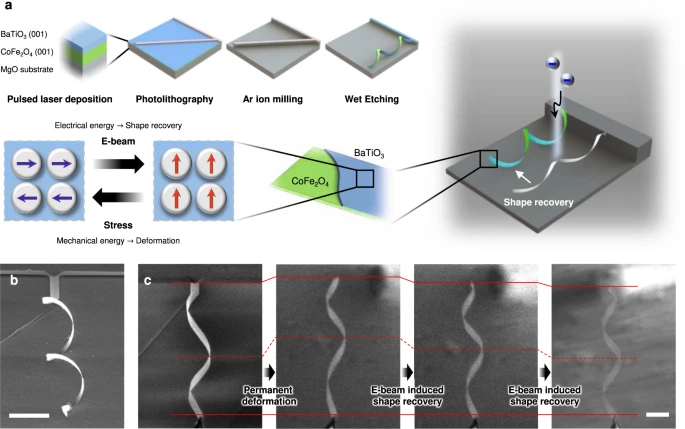Phys.org March 9, 2023
Magnetoelectric (ME) oxide materials can convert magnetic input into electric output and vice versa, making them excellent candidates for advanced sensing, data storage, and communication. However, their application has been limited to rigid devices due to their brittle nature. An international team of researcher (Switzerland, Germany, South Korea, Spain) has developed flexible ME oxide composite (BaTiO3/CoFe2O4) thin film nanostructures with distinct ME coupling coefficients. In contrast to rigid bulk counterparts, these ceramic nanostructures displayed a flexible behavior after being released from the substrate, and could be transferred onto a stretchable substrate such as polydimethylsiloxane. These ceramic films possessed high ME coefficients due to minimized clamping effect and preferred crystalline orientation, and exhibit reversibly tunable ME coupling via mechanical stretching due to their large elasticity (>4%). According to the researchers the twisted ferroic nanocomposites allow us to overcome the size limitations in traditional shape-memory alloys and open new avenues in engineering large-stroke shape-memory materials for small-scale actuating devices such as nanorobots and artificial muscle fibrils… read more. Open Access TECHNICAL ARTICLE 1 , 2

Electron beam induced shape-memory effect in twisted BTO/CFO nanocomposites. Credit: Nature Communications volume 14, Article number: 750 (2023)